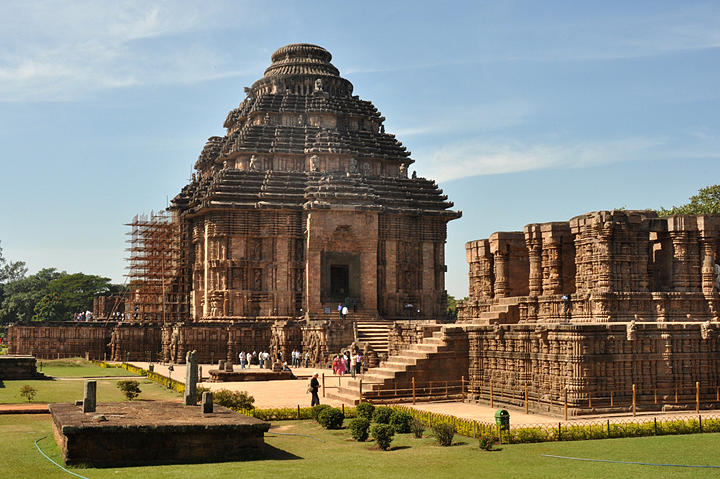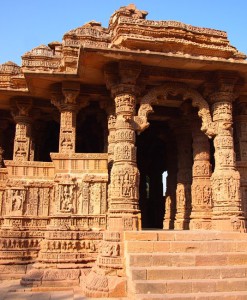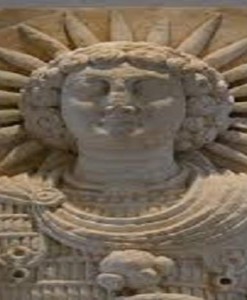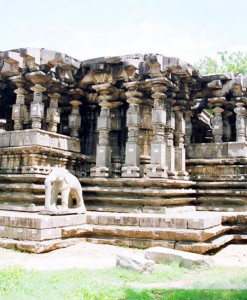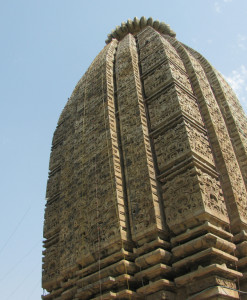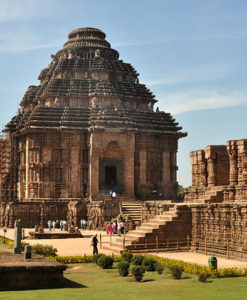No products in the cart.
The Konark Sun Temple (also spelled Konarak) is a 13th-century Hindu temple dedicated to the sun god. Shaped like a giant chariot, the temple is known for the exquisite stone carvings that cover the entire structure.
The Konark Sun Temple is the most popular tourist destination in Orissa and has been a World Heritage Site since 1984. It is located in the village of Konark, which is 35km north of Puri on the coast of the Bay of Bengal.
konark sun temple
The Sun Temple at Konarak was built in about 1250 AD by the East Ganga king Narasimhadeva. It is thought he built the temple to commemorate military successes against Muslim invaders.
According to local legend, the temple has a great aura of power that comes from two very powerful magnets said to have been built into the tower – magnets that allowed the king’s throne to hover in mid-air.
European mariners sailing off the coast used the temple’s tower for navigation, but dubbed it the Black Pagoda for the frequent shipwrecks that occurred along the coast. They attributed the disasters to the legendary magnets’ effect on the tidal pattern.
Konarak was sacked by the Muslim Yavana army in the 15th century. The central statue enshrined in the temple was smuggled away to Puri by priests, but the Sun Temple was badly damaged in the attack.
Nature took over the destruction from there. Over the centuries, the sea receded, sand engulfed the building and salty breezes eroded the stone. It remained buried under a huge mound of sand until the early 20th century, when restoration began under the British.
British archaeologists uncovered the lower parts of the temple that had remained well preserved beneath the sand and restored what they could of the rest of the ruins. Trees were planted to shelter the temple from the damaging winds and a museum was opened to display whatever sculpture wasn’t left in situ or sent to Delhi, Calcutta and London.
In 1924, the Earl of Ronaldshay proclaimed the newly-revealed temple to be “one of the most stupendous buildings in India which rears itself aloft, a pile of overwhelming grandeur even in its decay.”
The Konark Sun Temple takes the form of a huge chariot for the sun god Surya, with 12 pairs of stone-carved wheels and a team of seven galloping horses (only one of which survives intact).
The temple also symbolizes the passage of time, which is under the sun god’s control. The seven horses, which pull the sun temple eastwards towards the dawn, represent the days of the week. The 12 pairs of wheels represent the 12 months of the year and the eight spokes in each wheel symbolize the eight ideal stages of a woman’s day.
The main entrance to the complex is on the eastern (sea-facing) side, in front of the Hall of Offerings (bhogamandapa). This was a later addition to the complex and was likely used for ritual dance performances, as its walls are carved with sculptures of musicians and dancers as well as erotic scenes.
The sanctuary tower was once the centerpiece of the Konark Sun Temple, but today it is no more than a jumble of sandstone slabs off the western wing. The imposing structure with the pyramidal roofthat now takes center stage is actually the porch (jagamohana).
The roof of the porch has three tiers covered in statues, mostly musicians and dancers sereneding the sun god during his daily passage through the heavens. Sculptures on the bottom platform include a Shiva Nataraja, performing the cosmic dance. The interior is now blocked up.
Just beyond the porch is a double staircase that leads to a shrine containing a statue of Surya, the sun god. The beautiful image is carved of high-quality green chlorite stone and is one of the masterpieces of Konarak. Surya wears tall riding boots and is accompanied by a small figure of Aruna, the charioteer, at his feet. From here you can climb down into the remains of the inner sanctum, where the deity was originally enshrined.
The surfaces of the temple are carved with exquisite stone sculptures with a wide variety of subjects, including many erotic scenes based on the Kama Sutra. Erotic sculptures are found especially in niches halfway up the porch, along the sides of the platform and around the doorways of the main building.
Similar sculptures can be found on the temples of Khajuraho in Madhya Pradesh. The erotic art most likely symbolizes the ecstatic bliss enjoyed by the soul when it unites with the divine, but there are a number of theories on the matter.
Other sculptures decorating the temple’s exterior include deities, animals, floral patterns, voluptuous women, mythical beasts and aquatic monsters. The 24 giant wheels are beautifully carved and each of the eight spokes bears a medallion containing figurative carvings.
Friezes above and below the wheels depict military processions and hunting scenes, with thousands of rampaging elephants. Look for the giraffe in the top frieze along the south side of the platform – this proves that Konarak traded with Africa in the 13th century.
There are regular buses and Jeeps to Konark from Puri, which is 33km down the coast. The journey takes about an hour and the last bus back to Puri leaves at 6:30pm.
Alternatively, you can take an auto-rickshaw for Rs250-300 round trip, including waiting time.
Official guided tours leave from the Panthaniwas in Bhubaneswar (Tues-Sun 6:30-6:30, Rs130) and also visit Dhauli.
Konark Temple is open from sunrise to sunset for visitors.
Citizens of India and visitors of SAARC (Bangladesh, Nepal, Bhutan, Sri Lanka, Pakistan, Maldives and Afghanistan) and BIMSTEC Countries (Bangladesh, Nepal, Bhutan, Sri Lanka, Thailand and Myanmar) – Rs. 10 per head.
Others: US $ 5 or Rs. 250/- per head
(children up to 15 years free)
Archaeological Museum:
Opening Hours : 10.00 am to 5.00 pm
Closed on – Friday
Entrance Fee : Rs. 5/- per head
(Children up to 15 years free)
The Best time to visit is from November to February

